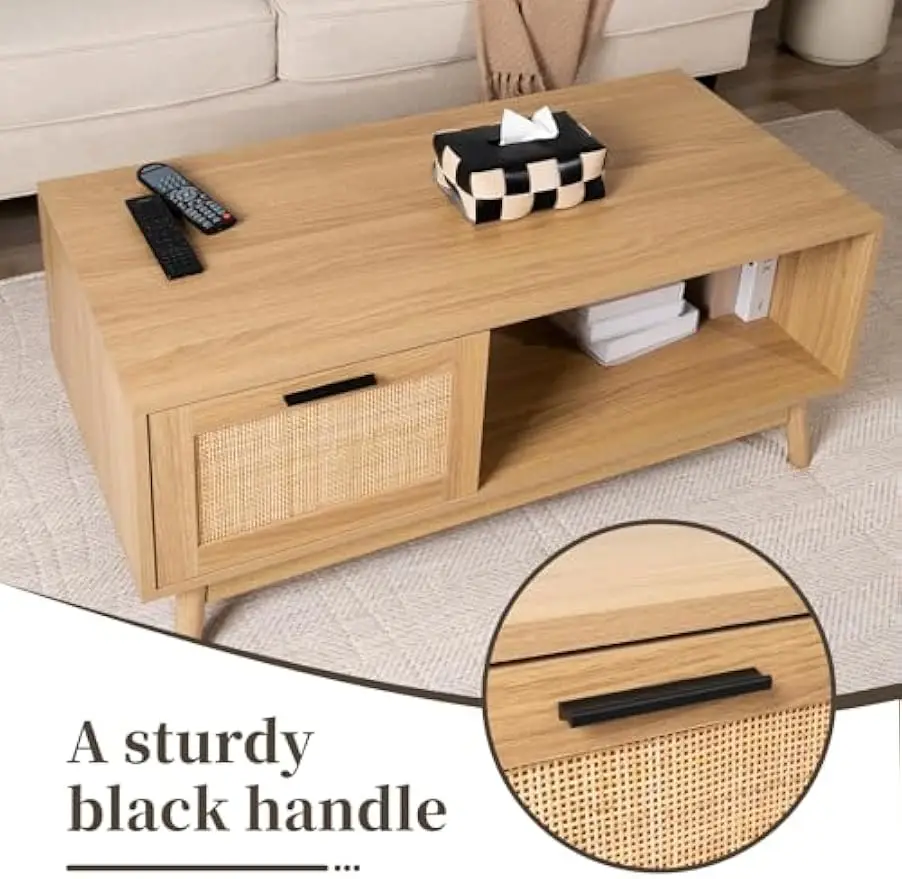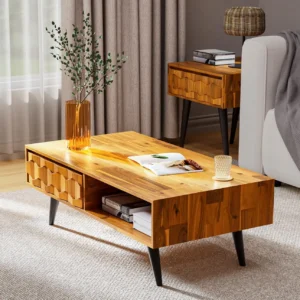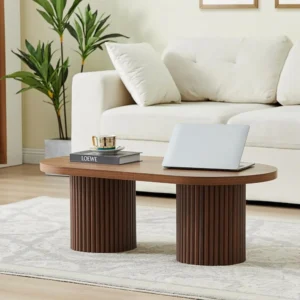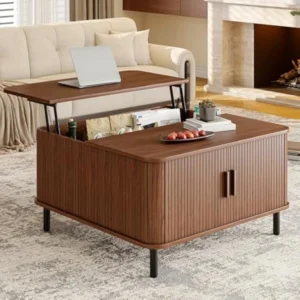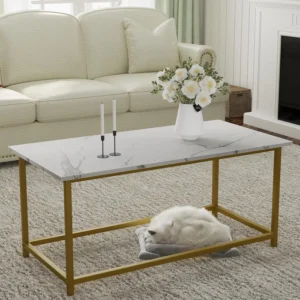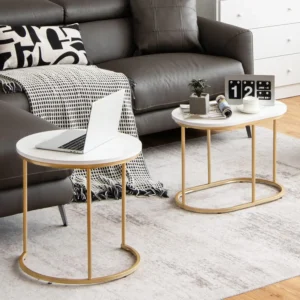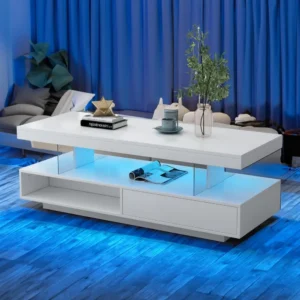Introduction to Scandinavian Design Aesthetic
Scandinavian design represents a distinctive approach to furniture that prioritizes clean functionality without sacrificing beauty. This design philosophy emerged from Nordic countries during the mid-20th century, developing as a response to harsh winters and limited resources that demanded practical yet uplifting living environments.
At its core, Scandinavian furniture design embodies several fundamental principles:
- Simplicity: Eliminating unnecessary ornamentation in favor of clean, purposeful forms
- Functionality: Creating pieces that serve their intended purpose efficiently
- Connection to nature: Using natural materials and light to bring warmth into interior spaces
- Accessibility: Designing beautiful furniture that remains attainable for everyday living
When applied to coffee tables, these principles translate into pieces that serve as both functional surfaces and artistic focal points. The enduring popularity of intelligent black mid-century coffee tables stems from their remarkable versatility—they complement virtually any interior style while providing practical everyday use.
Unlike ornate traditional furniture, Scandinavian Danish coffee table design celebrates restraint and purpose. Each element serves a specific function while contributing to an overall sense of visual lightness and harmony. This approach creates pieces that feel simultaneously timeless and contemporary, explaining why these designs continue to resonate in modern homes decades after their introduction.
Essential Design Elements of Scandinavian Coffee Tables
Scandinavian coffee tables are immediately recognizable through several distinctive visual characteristics that set them apart from other furniture styles. These design elements work together to create pieces that feel both sophisticated and approachable:
- Clean lines and geometric forms: Straight edges, gentle curves, and simple geometric shapes create visual clarity without overwhelming complexity.
- Visual lightness: Despite solid construction, these tables appear to float rather than dominate space, often through tapered elements and strategic negative space.
- Balanced proportions: Carefully calculated relationships between height, width, and depth create harmonious pieces that feel “just right” in their surroundings.
- Subtle organic influence: While geometric principles guide the overall form, gentle curves and natural edges prevent these pieces from feeling cold or sterile.
Perhaps most distinctive are the signature leg styles that define the Scandinavian silhouette. Typically slender and angled outward (splayed), these legs create stability while maintaining visual delicacy. The angle of these legs isn’t merely decorative—it represents thoughtful engineering that distributes weight efficiently while maximizing floor space visibility.
Many mid-century modern Danish coffee tables feature beveled or rounded edges that soften the overall appearance while maintaining clean lines. This subtle detail exemplifies the Scandinavian balance between geometric precision and organic warmth. These thoughtful elements create coffee tables that feel simultaneously structured and welcoming—pieces that bring order to a space without feeling rigid or imposing.
Premium Natural Materials in Scandinavian Design
The material selection in Scandinavian coffee tables isn’t merely aesthetic—it reflects deeper cultural values of sustainability, longevity, and connection to nature. Wood dominates this design tradition, with specific species chosen for both their visual qualities and practical attributes:
- Oak: Prized for its prominent grain pattern, strength, and warm honey tones
- Ash: Offers exceptional strength with distinctive grain and light coloration
- Birch: Features a smooth, even surface with subtle grain and creamy appearance
- Pine: Provides affordability while maintaining the signature Scandinavian lightness
- Beech: Delivers durability with a fine, tight grain pattern and pink-tinged hue
These light-toned woods create furniture that brightens interior spaces—a crucial consideration given the limited daylight hours in Nordic countries during winter months. The emphasis on showcasing natural wood grain reflects the Scandinavian respect for material authenticity.
While wood forms the foundation, solid wood coffee tables often incorporate complementary materials to enhance functionality and visual interest:
- Glass elements provide transparent surfaces while maintaining visual lightness
- Metal accents (typically brass or steel) offer structural reinforcement and subtle contrast
- Leather or wool details introduce textural variety while remaining natural in origin
The commitment to natural, sustainable materials reflects both environmental consciousness and practical durability. By choosing authentic, responsibly sourced materials, Scandinavian design creates pieces intended to last for generations rather than temporary trends—furniture that ages gracefully rather than requires replacement.
Wood Selection and Treatment Techniques
The distinctive appearance of Scandinavian coffee tables derives not just from the wood species but also from traditional treatment methods that enhance natural beauty while ensuring durability. These finishing approaches prioritize authenticity over artifice:
Traditional Scandinavian wood treatment typically involves:
- Hand-sanding to an exceptionally smooth finish that invites touch
- Application of natural oils (often linseed or tung) that penetrate wood fibers
- Light protective waxes that create a subtle satin rather than high-gloss finish
- Occasional white-pigmented treatments that brighten wood while maintaining grain visibility
These common wood finishes for coffee tables stand in stark contrast to heavy stains or paints that mask natural characteristics. Instead, they enhance and protect the inherent beauty of each piece of timber. The resulting surfaces develop a rich patina over time, allowing the furniture to tell a story of use and care rather than deteriorating.
This approach to wood treatment reflects the broader Scandinavian value of honest materials—allowing each piece to express its natural attributes rather than disguising them beneath artificial coverings. The resulting tactile quality creates furniture that engages multiple senses, inviting both visual appreciation and physical interaction.
Characteristic Color Palette
The color approach in Scandinavian coffee tables reflects a deliberate philosophy that balances minimalism with warmth. Rather than bold statements or trendy colors, these pieces rely on a refined palette that creates timeless appeal:
- Whites and creams: From bright white to soft ivory, these light tones create visual expansion and reflect available light
- Natural wood tones: Honey, amber, and blonde finishes celebrate the inherent color of quality timber
- Soft grays: Cool to warm gray tones provide subtle contrast while maintaining neutrality
- Muted accent hues: When color appears, it tends toward desaturated versions of blue, green, or terracotta
This restrained approach to color serves multiple purposes within Scandinavian design philosophy. Limited palettes create visual cohesion and tranquility, allowing the eye to rest rather than jumping between competing elements. The emphasis on neutral tones also ensures these pieces blend harmoniously with various interior styles over decades, not just seasons.
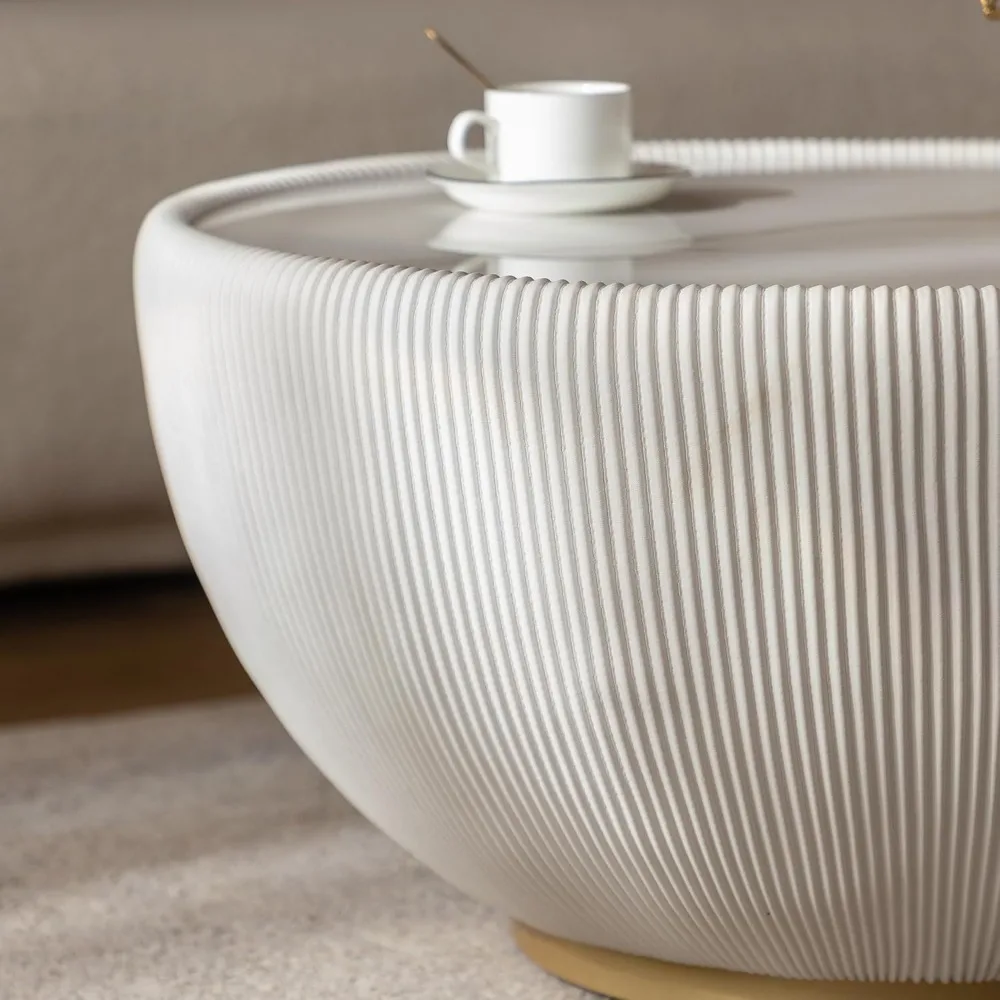
White coffee tables perfectly exemplify this approach, offering bright surfaces that amplify light while allowing wood grain or subtle details to provide natural visual interest. This balanced restraint in color selection demonstrates how Scandinavian design creates impact through thoughtful understatement rather than bold proclamation.
Functional Design Features
The famous Scandinavian principle that “form follows function” finds perfect expression in coffee table design. These pieces prioritize practical utility without compromising aesthetic appeal, demonstrating that genuinely good design solves problems invisibly:
- Thoughtful height: Typically ranging from 16-18 inches (40-45cm), these tables sit at the ideal elevation for comfortable use from standard sofas
- Accessible proportions: Depths of 22-30 inches (55-75cm) allow easy reach from seated positions
- Surface area optimization: Dimensions balanced to provide ample space without overwhelming rooms
Beyond basic dimensions, Scandinavian coffee tables often incorporate ingenious functional elements:
- Storage solutions: Concealed drawers, visible shelving, and compartments maximize utility
- Nesting capabilities: Tables that slide together for space efficiency when not in use
- Convertible designs: Surfaces that adjust in height or expand for different functions
- Cable management: Subtle solutions for today’s electronic needs that maintain clean aesthetics
These practical features reflect the Scandinavian understanding that beautiful furniture must also be useful furniture. The lift-top coffee tables represent an excellent example of this principle—transforming from standard coffee table to comfortable work surface through simple mechanisms that don’t disrupt the overall design integrity.
This functionality-first approach explains why these designs remain relevant despite changing lifestyles. By solving universal needs through thoughtful design, Scandinavian coffee tables continue to serve contemporary homes as effectively as they did when first introduced.
Innovative Storage Solutions
Scandinavian coffee table design elevates storage from mere utility to artistic innovation. Unlike furniture that treats storage as an afterthought, these pieces integrate containment solutions that enhance rather than compromise aesthetics:
- Floating drawer systems: Seemingly weightless storage compartments that glide smoothly without visible hardware
- Negative space utilization: Open shelving that creates visual lightness while offering display opportunities
- Dual-purpose elements: Structural components that simultaneously provide separation and storage
The minimalist approach to these storage solutions exemplifies the “hidden in plain sight” philosophy. Rather than announcing their function through obvious handles or ornate details, these features reveal themselves through use. Drawers open via subtle finger notches or integrated pulls that maintain clean lines when closed.
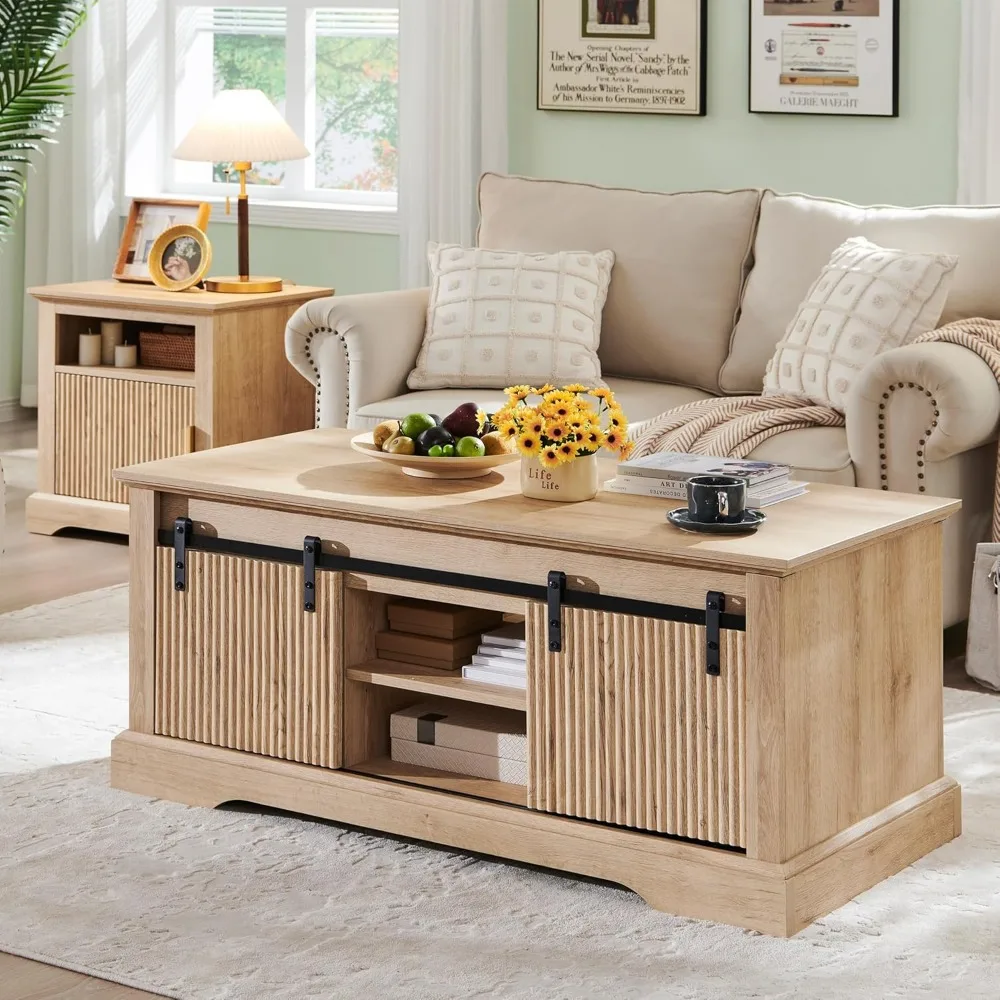
Mid-Century Modern Solid Wood Coffee Tables, Mid-Century Modern Teak Coffee Tables
$879.95 Select options This product has multiple variants. The options may be chosen on the product pageMid-Century Modern Danish Coffee Tables, Mid-Century Modern Oval Coffee Tables, Mid-Century Modern Solid Wood Coffee Tables
$390.05 Select options This product has multiple variants. The options may be chosen on the product pageMid-Century Modern Lift Top Coffee Tables, Mid-Century Modern Square Coffee Tables
$454.73 Select options This product has multiple variants. The options may be chosen on the product pageMid-Century Modern Marble Top Coffee Tables, Mid-Century Modern Rectangular Coffee Tables, Mid-Century Modern White Coffee Tables
Price range: $163.28 through $189.22 Select options This product has multiple variants. The options may be chosen on the product pageMid-Century Modern Nesting Coffee Tables, Mid-Century Modern Nesting Table Sets
$361.45 Select options This product has multiple variants. The options may be chosen on the product pageMid-Century Modern Rectangular Coffee Tables, Mid-Century Modern White Coffee Tables
$605.68 Select options This product has multiple variants. The options may be chosen on the product page
This storage integration demonstrates how Scandinavian design anticipates real-life needs without sacrificing visual harmony. Magazine collections find homes in sleek compartments; remote controls disappear into discrete drawers; household essentials remain accessible yet organized. The result is furniture that doesn’t just look beautiful in staged photographs but enhances daily living through thoughtful functionality.
Proportions and Scale in Scandinavian Tables
The visual success of Scandinavian coffee tables relies heavily on precise proportional relationships. These carefully calculated dimensions create pieces that feel perfectly balanced whether viewed alone or within room contexts:
- Height-to-width ratios: Typically maintain a 1:3 or 1:4 relationship between height and length
- Edge thickness: Usually 3/4 to 1 inch (2-2.5cm), substantial enough for durability but refined enough for elegance
- Leg diameter tapering: Often reducing from 2 inches (5cm) at top to 1 inch (2.5cm) at bottom, creating visual delicacy
Beyond the table itself, Scandinavian design considers the relationship between the coffee table and surrounding furniture. Ideally, these tables stand about 1-2 inches (2.5-5cm) lower than sofa seat height, creating comfortable ergonomics while maintaining proper visual weight in the room.
The concept of “breathing room” remains essential to these proportional calculations. Black mid-century coffee tables exemplify how proper scaling creates pieces that occupy space confidently without dominating it. The visual lightness achieved through proper proportions explains why these tables work effectively in various room sizes—they create presence without overwhelming even modest spaces.
Craftsmanship and Construction Details
The enduring quality of Scandinavian coffee tables stems from construction techniques that prioritize integrity over convenience. While mass-produced imitations might capture surface aesthetics, authentic pieces reveal their quality through construction details:
- Joinery excellence: Mortise and tenon, dovetail, and finger joints create connections stronger than the wood itself
- Grain matching: Carefully selected wood pieces with continuous grain patterns across surfaces
- Structural integrity: Internal frameworks that prevent warping and maintain stability over decades
- Balanced engineering: Distribution of weight and stress to prevent weak points
These essential features of solid wood tables demonstrate the Scandinavian commitment to furniture that improves rather than deteriorates with age. Unlike disposable furniture relying on hidden fasteners and adhesives, these construction methods create pieces that can be repaired and restored indefinitely.
The hallmarks of quality craftsmanship appear in subtle details: perfectly flush joints, consistent edge profiles, and smooth transitions between elements. Rather than hiding construction methods, Scandinavian design often highlights them as visual features—celebrating the skilled work that creates lasting quality.
Styling Your Scandinavian Coffee Table
The minimalist nature of Scandinavian coffee tables provides an ideal foundation for thoughtful styling. The approach to decorating these surfaces follows the same principles as the tables themselves: intentional, restrained, and focused on quality over quantity:
- Rule of three: Limiting objects to three main elements creates visual balance without clutter
- Height variation: Including items of different heights creates visual interest and dimension
- Natural materials: Favoring ceramics, wood, natural fibers, and botanical elements
- Functional beauty: Selecting decorative items that also serve practical purposes
Effective styling maintains negative space—allowing the table itself to breathe while highlighting selected objects. This approach creates visual moments rather than overwhelming arrangements, following the Scandinavian principle that “less is more.”
Popular styling elements typically include:
- Handcrafted ceramic vessels in neutral tones
- Curated art books or design volumes
- Natural elements like wood sculptures or stone objects
- Simple floral arrangements focusing on form over abundance
For seasonal refreshes, styling a mid-century coffee table might incorporate textural changes rather than complete transformations—woolen textures in winter giving way to lighter linens in summer, while maintaining the overall aesthetic integrity.
Complementary Furniture Pairings
Scandinavian coffee tables demonstrate remarkable versatility when paired with various furniture styles. Their clean forms and neutral materials create bridges between different aesthetic approaches:
- Mid-Century Modern: Natural pairing given shared origins and design principles, particularly with wooden-framed seating
- Contemporary: Creates pleasant contrast between current trends and timeless forms
- Minimalist: Reinforces simplified aesthetic while adding natural warmth through wood elements
- Transitional: Serves as neutral anchor between traditional and modern elements
The emerging Japandi style—blending Japanese minimalism with Scandinavian warmth—represents perhaps the most harmonious pairing. Both traditions emphasize simplicity, natural materials, and craftsmanship, creating spaces that feel both serene and welcoming.
When creating cohesive interiors, consider how various styles complement mid-century modern elements. The key lies in balancing visual weight—pairing substantial upholstered pieces with the visual lightness of Scandinavian tables creates dynamic tension while maintaining harmony.
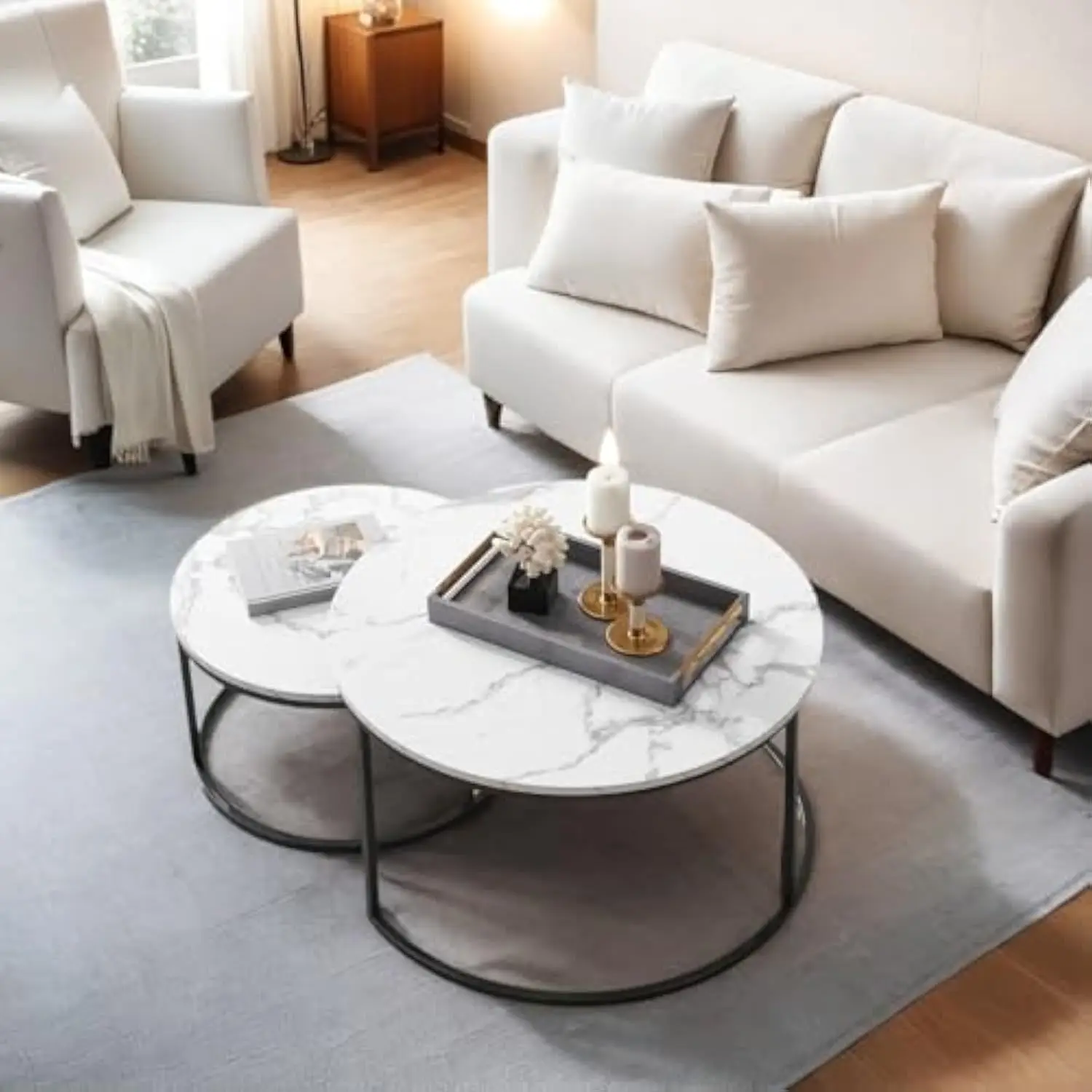
Creating Balance with Textiles and Lighting
The simplicity of Scandinavian coffee tables creates perfect opportunities for textural contrast through thoughtfully selected textiles and lighting. These elements soften geometric forms while enhancing the inviting quality of living spaces:
- Layered textiles: Natural fiber rugs beneath tables provide foundation, while wool throws and linen cushions on nearby seating add dimensional texture
- Material contrast: Soft fabrics balance the solid structure of wooden tables, creating visual and tactile variety
- Lighting integration: Table lamps with ceramic or wood bases complement coffee table materials while creating ambient warmth
These elements contribute to the Danish concept of “hygge”—the creation of cozy contentment through environmental quality. The interplay between the structured coffee table and softer surrounding elements captures the essence of Scandinavian interior philosophy: spaces that feel both ordered and inviting.
Lighting consideration proves particularly important, as thoughtfully positioned lamps can highlight the quality wood grain and craftsmanship details of fine coffee tables. Warm-toned bulbs enhance natural wood colors, while properly positioned lighting eliminates harsh shadows that might obscure design details.
How to Select an Authentic Scandinavian-Inspired Coffee Table
Identifying quality Scandinavian-inspired pieces requires attention to specific details that distinguish authentic design from superficial imitation:
Quality Indicators:
– Solid wood construction (particularly visible in edge thickness)
– Consistent grain patterns across surfaces
– Smooth, even finishes without artificial sheen
– Precise joinery with tight, even seams
– Proper proportional relationships between elements
– Appropriate weight that indicates solid construction without excessive heaviness
When evaluating options across price points, consider which elements contribute most significantly to long-term satisfaction. While budget-friendly options might incorporate some manufactured materials, the best value comes from pieces that maintain authentic design principles and quality construction, even if simplified.
Sustainability considerations should include not just material sourcing but long-term usability. A quality Scandinavian-inspired coffee table represents a sustainable choice through its longevity—a piece purchased once that serves for decades rather than requiring frequent replacement.
Frequently Asked Questions About Scandinavian Coffee Tables
What makes a coffee table truly “Scandinavian-inspired”?
Authentic Scandinavian-inspired tables combine clean lines, light wood tones, functional design, and quality craftsmanship. The emphasis on simplicity, natural materials, and practicality distinguishes this style from other minimalist approaches that might appear similar but lack the warmth characteristic of Nordic design.
How do I care for and maintain the wood finish?
Most Scandinavian tables benefit from simple maintenance: dusting with soft cloths, immediate attention to spills, and periodic refreshing with appropriate wood oils. Avoid harsh chemicals, excessive moisture, and direct sunlight that might damage natural finishes. Quality pieces develop character over time rather than deteriorating.
Can Scandinavian coffee tables work in small spaces?
These tables are ideal for modest spaces given their visual lightness and functional efficiency. Nesting coffee tables offer particularly effective solutions, providing expandable surface area without permanent footprint commitment. The lifted leg design creates visible floor space that helps smaller rooms feel less crowded.
What woods are most authentic for this style?
While oak represents perhaps the most iconic choice, any light to medium-toned hardwood aligns with Scandinavian principles. Ash, beech, birch, and pine all appear in authentic designs, with selection typically reflecting local availability and specific functional requirements of each piece.
Are Scandinavian Coffee Tables Worth the Investment?
The value proposition of quality Scandinavian-inspired coffee tables extends beyond immediate appearance to consider long-term satisfaction and utility. Several factors contribute to their investment worthiness:
- Design longevity: The clean, timeless aesthetic remains relevant across decades rather than falling victim to passing trends
- Functional durability: Quality construction ensures continued structural integrity through years of daily use
- Material aging: Proper wood selection and finishing often results in pieces that become more beautiful with age
- Versatility: The neutral design complements evolving interior styles as personal preferences change
- Resale potential: Well-maintained quality pieces often retain significant value in secondary markets
When comparing investment pieces with budget alternatives, consider cost-per-use over the furniture’s lifetime. While initial expense may be higher for authentic designs from quality manufacturers like Hearth Forms, the extended service life and continued aesthetic relevance typically result in better long-term value than cheaper alternatives requiring frequent replacement.
Contemporary Interpretations of Classic Scandinavian Design
Today’s designers continue evolving Scandinavian coffee table traditions while honoring foundational principles. Contemporary interpretations introduce subtle innovations that address modern needs while maintaining essential characteristics:
- Material evolution: Sustainable composite woods and recycled materials that maintain aesthetic qualities while improving environmental performance
- Technology integration: Wireless charging capabilities and smart features integrated without disrupting clean design
- Production techniques: CNC precision that enhances construction quality while making craftsmanship more accessible
- Cultural fusion: Incorporation of global influences that complement Scandinavian principles
These evolutions demonstrate how timeless design principles remain relevant through thoughtful adaptation. Rather than reinventing established success, contemporary designers build upon Scandinavian foundations—recognizing that the principles of simplicity, functionality, and connection to nature transcend specific eras or trends.
The most successful modern interpretations honor traditional proportions and material sensibilities while addressing contemporary living needs. This balance between respect for tradition and openness to innovation ensures Scandinavian coffee table design remains as relevant to today’s homes as when first introduced.

